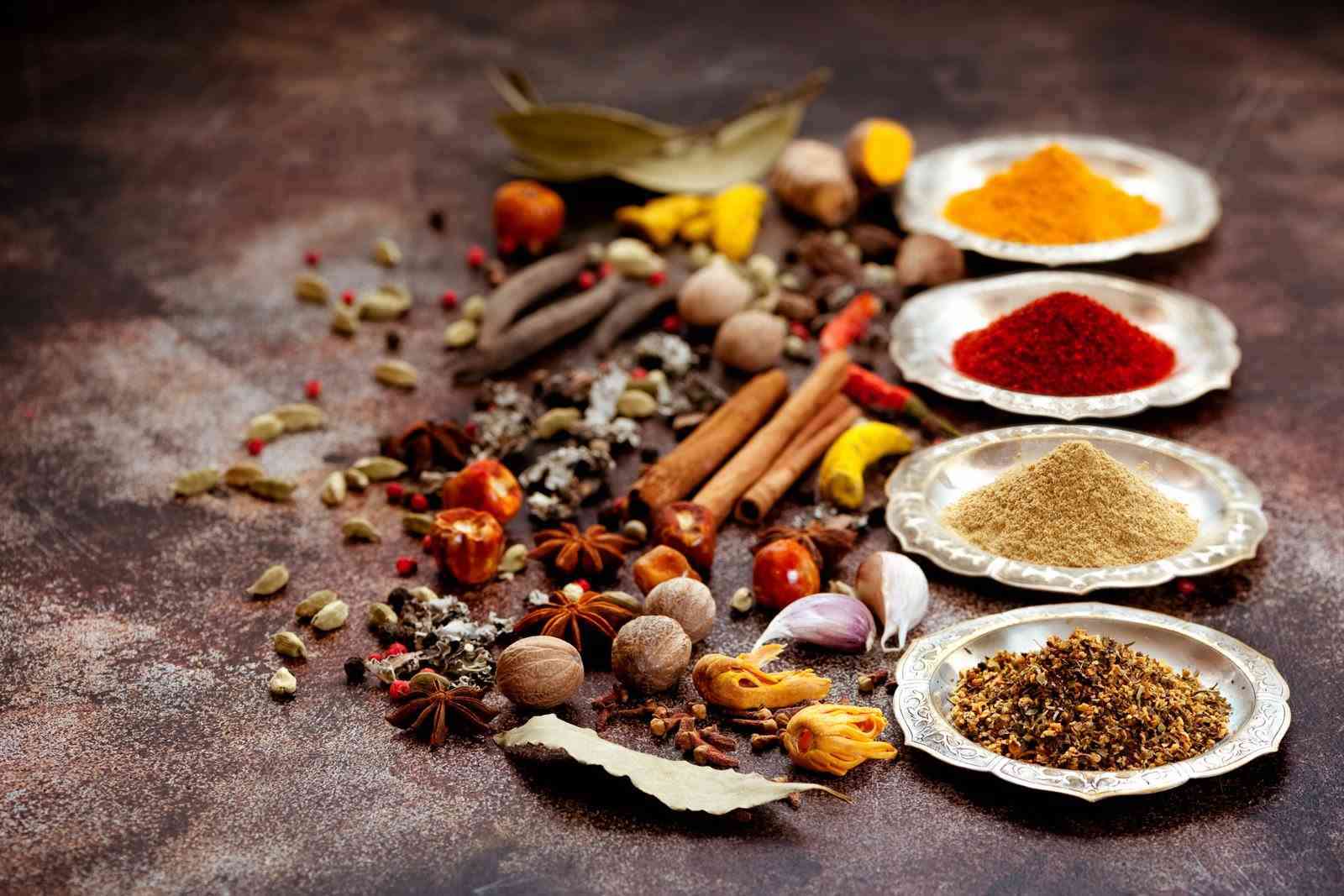
Indian cuisines are known worldwide, particularly for the hot spicy curries involving the excessive use of chilies and aromatic spices enough to stimulate one’s lost appetite. While cooking the authentic Indian recipe, one has to stick to traditional Indian spice mixtures, or even better, single species.
A typical curry powder derives its taste mainly from roasted cumin, coriander, black pepper, chilies and fenugreek with additional ginger, turmeric, lentil flour, salt and sweet spices including cinnamon, cloves and green cardamom. However, in South India, where the cuisine is mostly vegetarian, the cooking is very hot and pungent due to excessive use of chilies. At the same time it is very aromatic, particularly due to fresh curry leaves as natural flavoring agent in various curries and chutneys.
Overview
The aromatic curry leaves are derived from more or less deciduous shrub (0.9 m in height) or a small spreading tree Murraya koenigii Spreng belongs to the family Rutaceae. The name of curry plant is often used for another plant Helichrysum italicum, a member of the family Asteraceae, several subspecies of which grow in the European Mediterranean countries.
The plant attains a diameter of 15-40 cm. The flowers are in terminal corymbs with white imbricate petals. The fruits are ovoid berry like with depleted seeds.
Cultivation of curry leaves
The curry plant is native to India and is known by various names in different parts of the country. In Hindi it is known as Meetha Neem or Kari Patta. In Bengal and Orissa as Barsunga, Karuveppilai in Tamil, Karipat in Marathi and Bowala in Punjabi and so on. Although curry leaves are cultivated in some of the regions for its aromatic leaves and ornamental value. It is found wild, almost everywhere in the Indian subcontinent upto an altitude of 1500 m excluding the higher levels of the Himalayas. It is dominant in Tamil Nadu, Kerala, Andhra Pradesh and Maharashtra. It is also found in Bengal, Orissa and Assam.
Besides this, by the virtue of South Indian immigrants, curry leaves have reached abroad, particularly Malaysia, South Africa and the Reunion Island. The delicate fragrance of the fresh leaves is due to several aromatic compounds present in it. The leaves, particularlycontain essential oils, the amount of which varies with freshness, genetic strain and extraction technique.
Nutritional Value of Curry Leaves
The leaves are a rich source of Calcium and Vitamin A, but their nutritional availability is strongly affected due to the presence of high concentration of oxalic acid. The Central Food Technological Research Institute (CFTRI), Mysore determined the chemical composition of curry leaves at three stages of maturity, tender, medium mature and mature leaves. It was found with advancing maturity there is a gradual decrease in volatile oil and oleoresin. But there was a progressive increase in protein, fat, sugar, starch, crude fibers and mineral matter content.
The free amino acids present in the leaves are alanine, alpha-amino-n-butyric acid, asparagines, aspartic acid, glutamic acid, Isoleucine, leucine, phenylalanine, serine, threonine, tryptophan and tyrosine. The curry leaves lose their delicate fragrance when dried. Hence it is better to obtain them fresh. They may be kept in the refrigerator in frozen condition for some time. But, in such cases, it is suggested not to remove them from their branches before usage.
Medicinal Usage of Curry Leaves
Since ancient times curry plant has been widely used in India and other countries as a vegetable drug. There is not much difference in the value of medicinal herbs and method of treatment used by the people from those mentioned in Ayurvedic, the Unani, the Allopathic and Homeopathic literature.
In the Ayurvedic system of medicine, the powdered dry leaves of curry plant are mixed with honey and juice of betel nut and used as an anti-periodic. It is used in indigenous medicine as a tonic, in relieving flatulence or griping. It can be helpful in assisting digestion and promoting appetite and stimulant. The extract of the leaves has been used as febrifuge or antipyretic. Also the mixture of curry and mint (pudina) leaves can stop vomiting. Even an infusion of the roasted leaves of curry plant can alone be used to check vomiting.
The green tender leaves of curry plant when eaten raw can cure dysentery. It also finds an external use in curing eruptions and the bites of poisonous animals. The juice of its root helps in relieving kidney pain. Experiments performed on guinea pigs. It has been shown that the aqueous extract of the leaves when administered to female guinea pigs raises a phagocytic index. The leaves, fruits, bark and roots of curry plants contain crystalline glucoside called koenigen.
Conclusion
Apart from medicinal importance, the grayish white wood of curry plant is durable, hard, even and close grained is used for agricultural implements. The curry plant not only stands as an excellent example of an important medicinal and ornamental plant, but also as an important part of South Indian cuisine. Curry leaves whether taken raw or as stuffing can keep several ailments away.